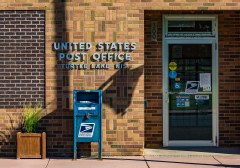More than 50 percent of books, clothing and consumer electronics are purchased online, accounting for more than $68 billion in package shipping fees last year. But if the United States Postal Service wants to compete and thrive for a larger share of that shipping market it will need to develop a strategic technology plan, according to a new white paper from the USPS Inspector General.
In just four years, shipping costs paid by Amazon have increased by nearly $5 billion, or 274 percent. However, not all of that business went to USPS — the giant online marketplace also ships with FedEx and is at the forefront of researching its own cutting-edge delivery methods, including the use of drones.
 As e-commerce grows, so does the growth in Postal Service packages. In 2013, 17 percent of Postal Service revenue came from packages alone.
As e-commerce grows, so does the growth in Postal Service packages. In 2013, 17 percent of Postal Service revenue came from packages alone.Source: USPS OIG
In fiscal year 2013, packages accounted for 17 percent of total revenue and 23 percent of total cost for the Postal Service, the white paper states. But according to David Yacobucci, a senior economist at USPS’ OIG and a contributor to the white paper, that number will only increase as time goes on.
“Packages are the future of e-commerce,” Yacobucci told FedScoop. “It’s growing, it’s booming. Connecting those retailers to residences or businesses is the future, and it’s growing.”
Despite the fact that e-commerce is not a new phenomenon, Yacobucci said there is still an opportunity for the post office to take advantage of the growing market now.
 “All package delivery companies, in my opinion, are chasing the market,” Yacobucci said. “They’re trying to define the market, but they’re also chasing the market.”
“All package delivery companies, in my opinion, are chasing the market,” Yacobucci said. “They’re trying to define the market, but they’re also chasing the market.”
The package services market is moving fast due to e-commerce, Yacobucci said; however the uptick in shipping is just an accelerated version of a familiar situation that has been around for decades.
“Look, e-commerce or m-commerce, it doesn’t matter what you call it, it’s all long-distance shopping,” Yacobucci said. “It’s been around forever, and the post office had a traditional role in that, as did others. This is a new evolution on what’s already there. The Postal Service has the backbone and infrastructure to do what it’s been doing very well.”
But the question surrounding the report is whether the Postal Service can continue to serve as well as it did in the era of catalogue shopping.
The authors of the white paper found that in order to continue as an efficient and effective provider of package services and shipping for online retail, the Postal Service needs to develop a package strategy that includes building a perception around reliability, investing in its infrastructure, strengthening its role in digital information services for packages and expanding beyond traditional delivery.
“The OIG found that the Postal Service has successfully managed package growth,” the white paper states. “However, opportunities exist to improve readiness for package growth by taking steps that include implementing dynamic routing, retaining more city carrier assistants, increasing barcode scanning, reducing customer wait times, and adjusting mail arrival schedules to correspond with machines’ operating windows.”
As companies like Amazon look toward innovative ways to deliver packages, like drone delivery, the Postal Service is looking into options like Sunday delivery and, in some cases, same-day delivery. But that’s not enough, Bill Jusino, a public policy analyst at USPS’ OIG said.
“I’m sure the iPhone of package services exists,” Jusino said. “No one knew they needed an iPhone in 2006, but in 2007 and 2008, everyone needed an iPhone. I’m sure that something like that equivalent exists, and no one knows what that is. So the Postal Service should be forward looking in that way to try to find what that is to the best of their ability and to provide their customers with it.”
 Modern package delivery companies’ internal networks and processes align with the external offerings to customers. (Source: USPS OIG)
Modern package delivery companies’ internal networks and processes align with the external offerings to customers. (Source: USPS OIG)The white paper encourages the Postal Service to monitor and study consumer preferences to determine the best services to offer to customers going forward, with a focus on maximizing efficiency and minimizing cost to the cash-strapped independent agency.
“Establishing a reputation as the package delivery company offering the most reliable and cost-effective services will help ensure its future as a modern delivery company that meets the needs of 21st century commerce,” it states.





